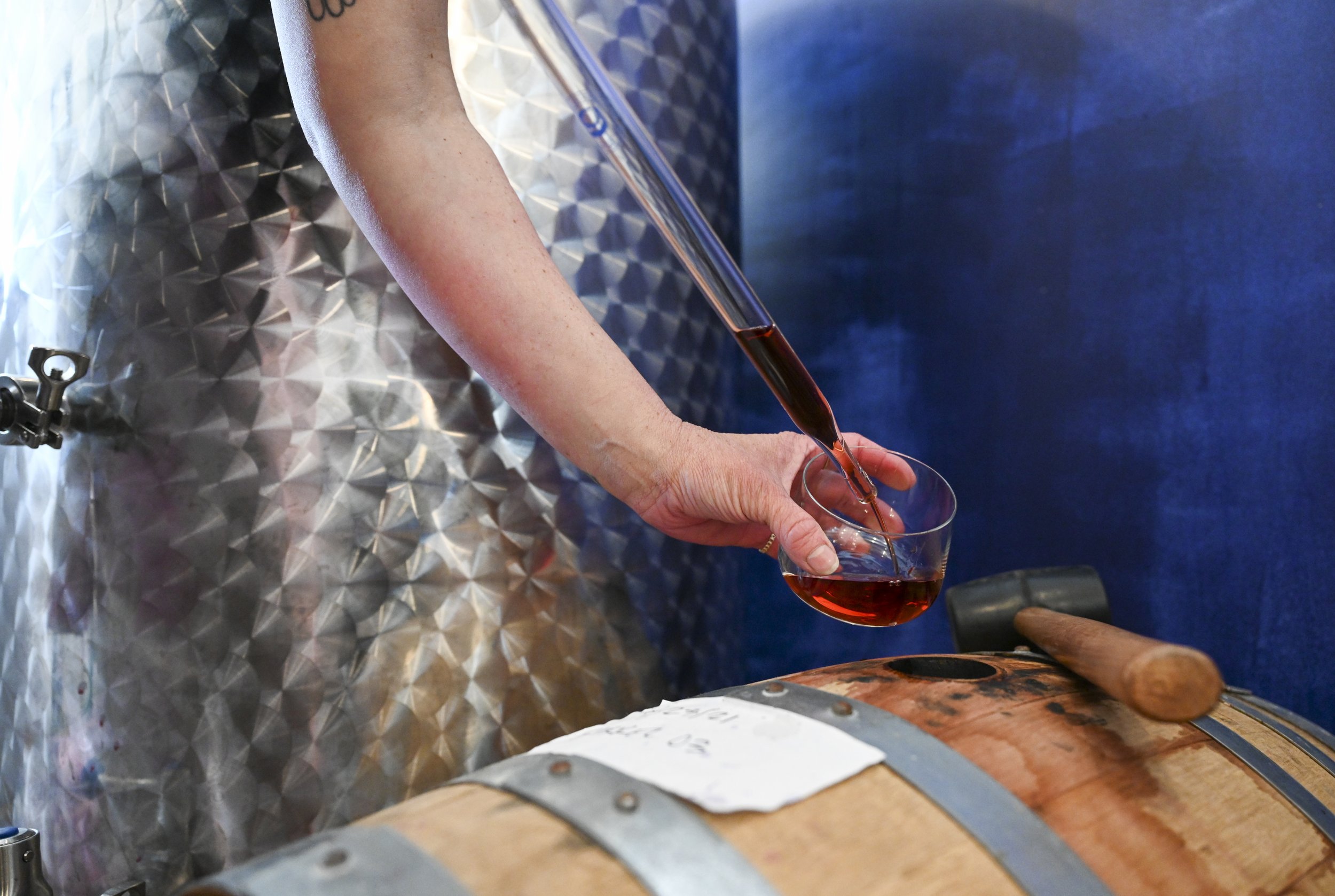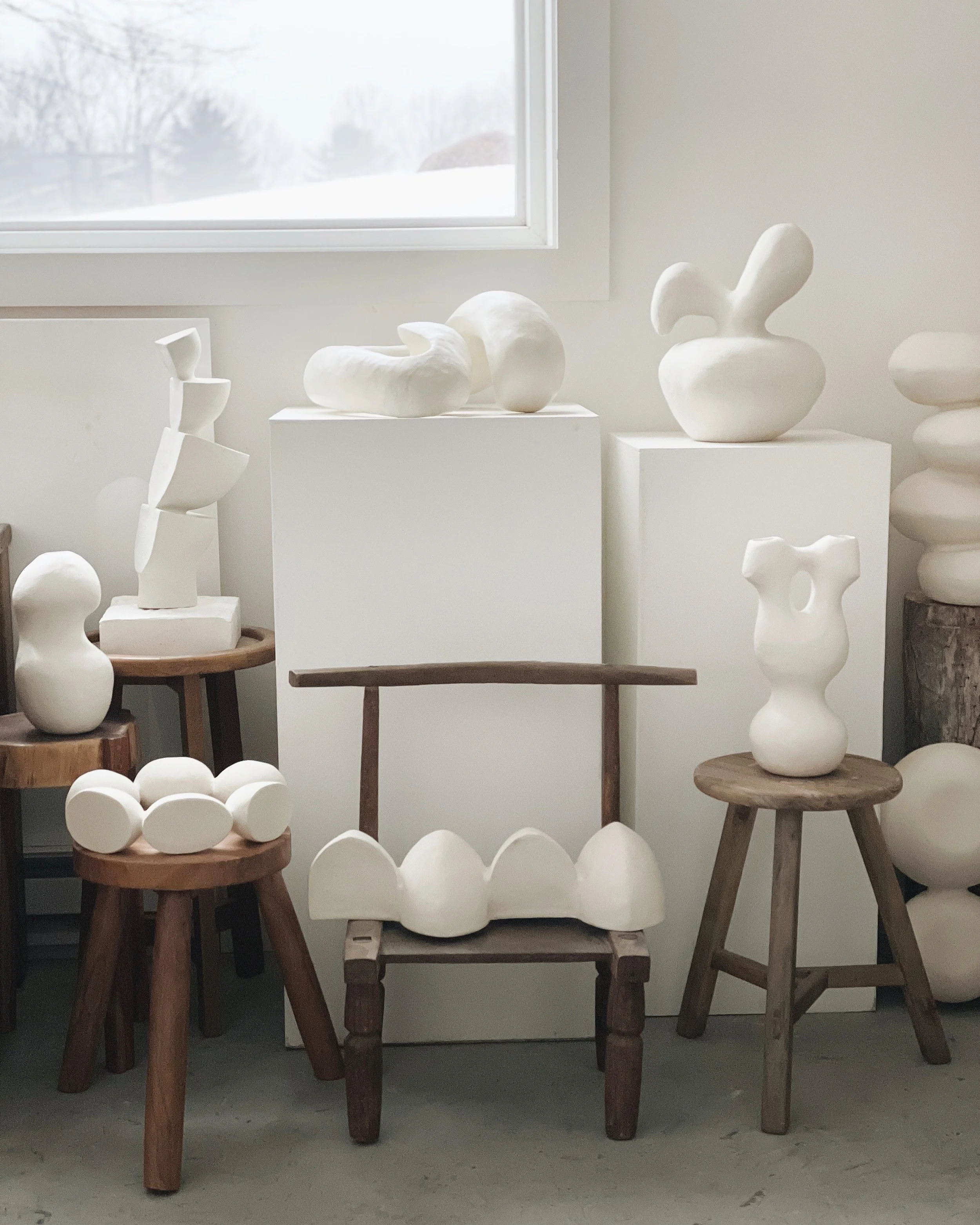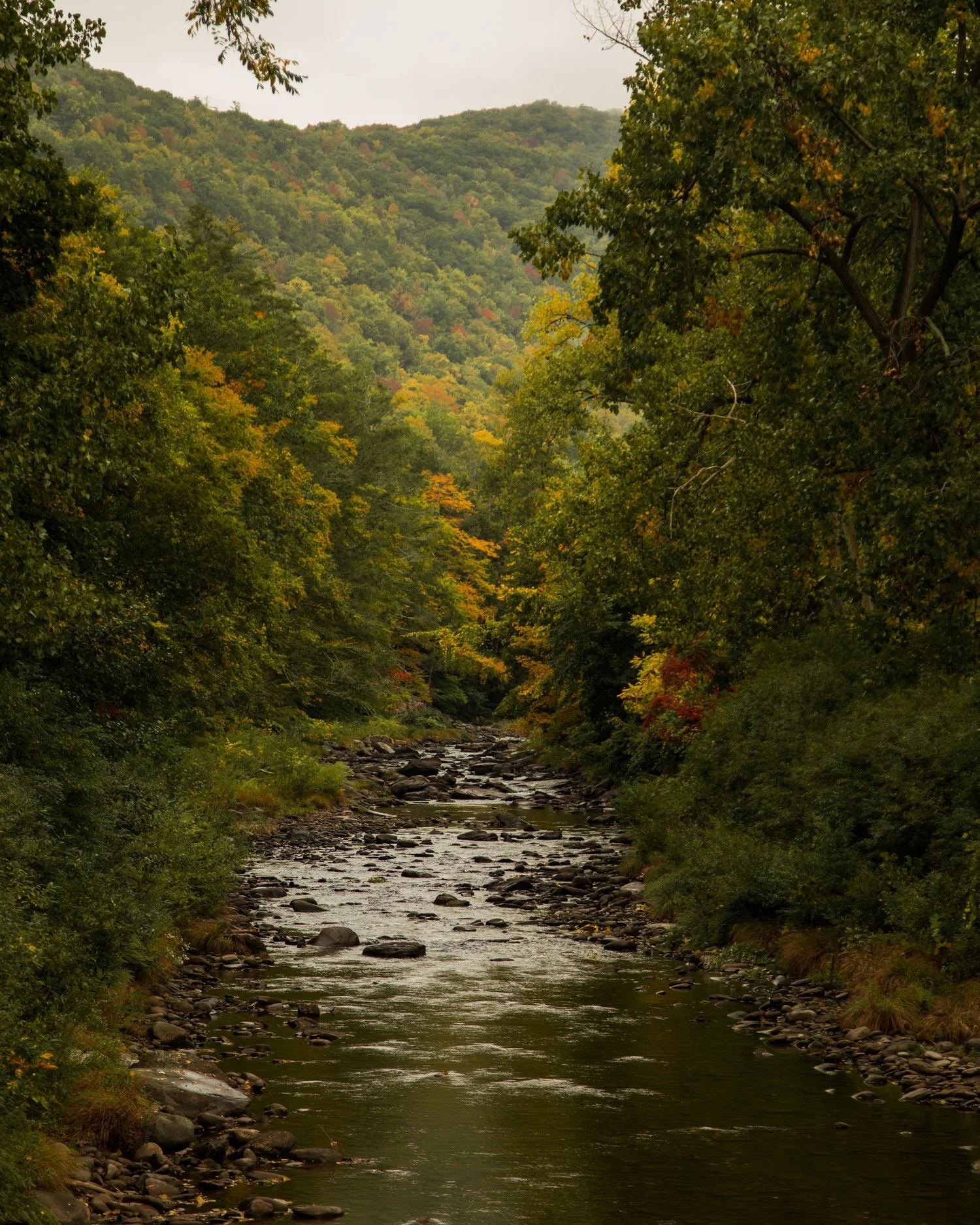Creating Current Cassis
New York City apartments aren’t known for their spatial extravagance. So in the summer of 2018, when Rachael Petach’s kitchen (in a third-floor walk-up in Greenpoint, Brooklyn) began to fill with stock pots — and Aginox fustis and Lexan Containers — her husband had some questions.
And, when 10-pound boxes of fruit and cases of rosé started appearing on their doorstep, those questions boiled down to one. “I remember him being like, ‘What are you doing?’” says Petach.
She’d been working in event operations and cultural curation for small boutique hotels like The Wythe in Williamsburg when she got the idea to start concocting a new beverage. “At the time, I didn’t totally know [what I was working towards]… but it feels like, in retrospect, it was all leading to this.
This, being Current Cassis, the small-batch blackcurrant liqueur that she makes in a tiny 400-square-foot factory space above Left Bank Ciders in Catskill, New York. Inspired by the berries that flooded her senses while WWOOFing on an organic farm in France after graduating from UC Berkeley, her take on traditional crème de cassis deviates from the sweet, sometimes cloying cordial often used to make wine cocktails like the Kir Royale. It’s the addition of local honey (instead of sugar) and an aromatic blend of botanicals that add nuance to the fruit’s characteristically tart flavor. And though you can taste notes of cardamom, bay leaf, lemon verbena, and citrus rind in the infusion, the blackcurrant is the real star.
“It was the intensity of the fruit itself that I fell in love with,” says Petach of the European staple, which is used in everything from baked goods to fruity sauces to purple Skittles across the Pond. “It’s herbaceous and savory and unlike anything else — because it’s not in anything here in the States.”
The countrywide blackcurrant blackout began in 1911, when the U.S. government made it illegal to grow them as a precautionary measure against a tree-killing fungal disease called white pine blister rust, which was thought to spread through the common blackcurrant shrub. Because white pines were dominant in the timber industry at the turn of the 20th century, it only made sense (to the loggers, at least) to protect the trees at the expense of the shrubs. And so, a generation of Americans were deprived of one of Europe’s most beloved flavor profiles.
Though disease-resistant varieties of blackcurrants arrived in 1966 prompting the federal government to relax its ban, many states continued to recognize it. New York was among them until as recently as 2003, when Hudson Valley farmer Greg Quinn successfully lobbied legislators to overturn the archaic law. Today, Quinn grows more than 50 acres of blackcurrants, selling the niche fruits to wineries and small food purveyors, including Petach, who now goes through about 800 pounds of the berries per month but started in 10-pound increments when she began experimenting in that tiny apartment four years ago.
“I was cooking it, macerating it, partially fermenting it, applying it to shrubs and infusions. I felt like I was tapping into this other creative part of my brain,” she recalls of the 18-month process of trial-and-error, which drew on her peripatetic culinary background and was unexpectedly launched by a figment of her imagination. “I got this thing stuck in my mind that I hadn’t tasted before, that wasn’t being produced on the market, and I had to reverse engineer how to get that flavor.”
She knew she had something when friends in the food and beverage industry began requesting her concoction by the bottle. So in the beginning of 2020, serendipitously just before the Covid-19 pandemic hit, she decided to pack up and move to the Hudson Valley with her husband Steve Quested (a graphic designer who now does the branding work for Current Cassis) and one-year-old son. She found the small factory space and never looked back, churning out about 550 bottles a month, often conducting all of the day-to-day operations on her own, from hand labeling the bottles to loading the 300-liter stainless steel fermentation tanks with her Hudson Valley–sourced ingredients (even her grain alcohol comes from local Hudson Valley Distillers).
“There’s a lot of physical comedy in this,” Petach laughs, noting that she does have some help on press days. “We’ll load 800 to 1,000 pounds of fruit into this tiny Toyota Rav 4 — it looks like a clown car. And then you have these petite 5’4” women lifting up these big hoses and blackcurrant juice spraying everywhere.”
It’s no surprise that persistently purple hands are a side effect of her line of work, but she wouldn’t have it any other way, especially when she looks back on the brand’s trajectory. “I think that I didn’t know it could be this good,” she says of the positive feedback she’s gotten from the food and beverage community as well as regular folks who enjoy Current Cassis spiked in seltzer, mixed with gin or vodka, or simply poured over ice. (The liqueur is currently available at stores in New York, New Jersey, and California, and has been embraced by restaurants and bars across New York City.) “I wanted to make something that felt like a manifestation of the ways I enjoy connecting people and create this sensorial experience.”
The more people discover and share Current Cassis, the more potential Petach sees for expanding her operations. She’s currently looking for a larger bottling space and has ideas for a barrel-aged version of the liqueur. “People are really surprised by its versatility,” she says. “Bartenders are being creative with it because it leans vermouthy, but there are so many ways you can take it.” No doubt Petach will have fun experimenting.
Find @currentcassis in Catskill, New York. www.ccassis.com
By Jennifer Fernandez
Images by Casey Kelbaugh








